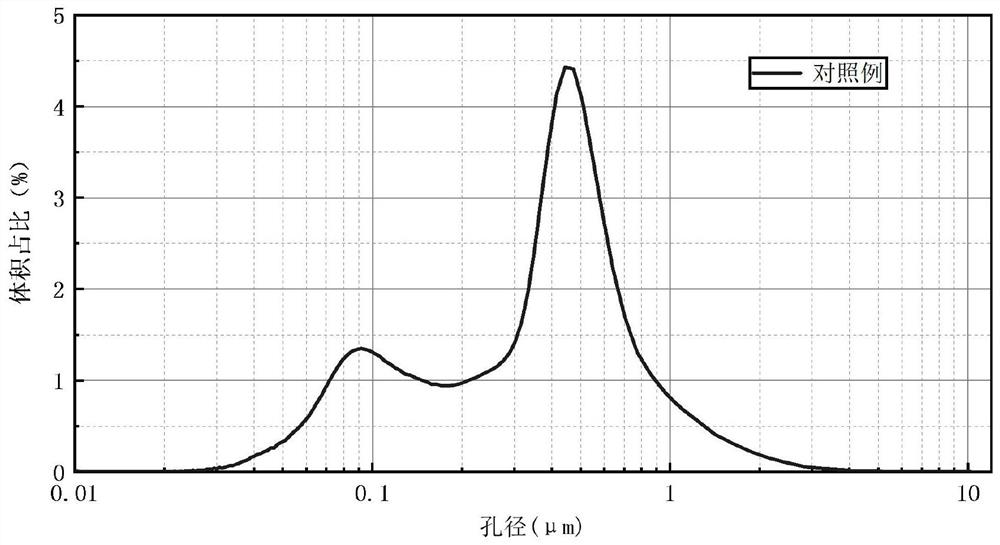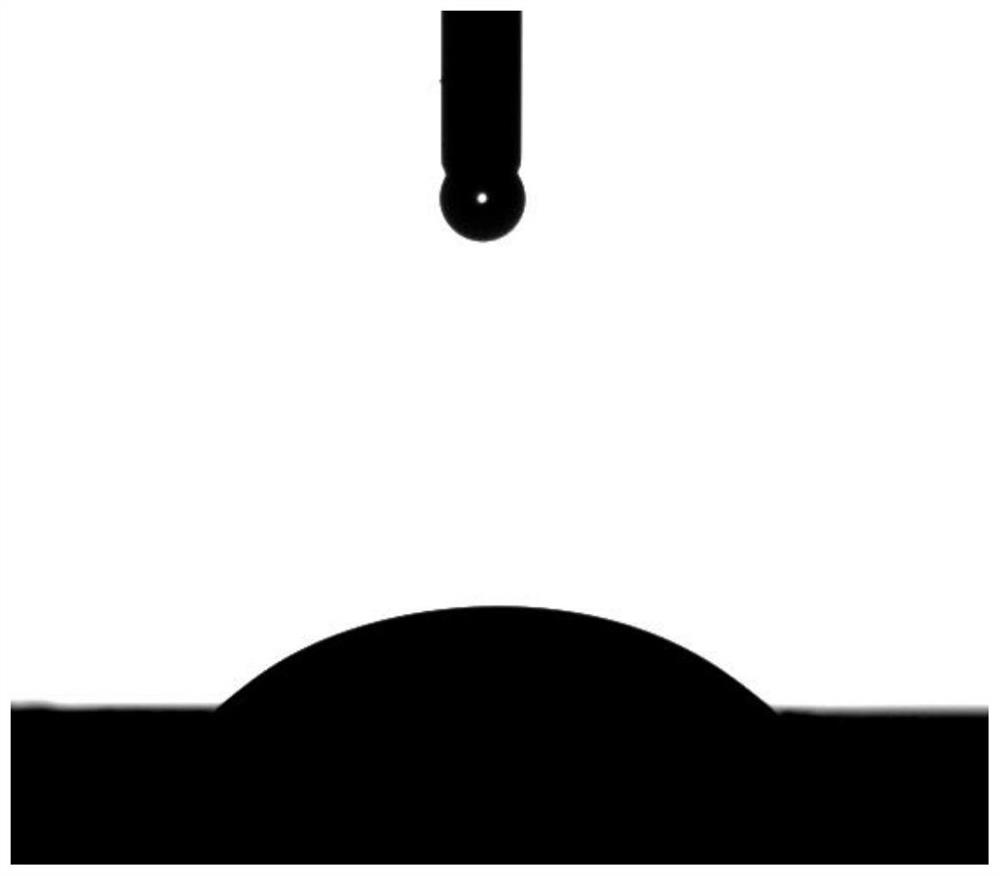Preparation method of pore-hydrophobic magnesium oxychloride cement system suitable for oil well cementation
A magnesium oxychloride cement and oil well cementing technology, which is applied in the field of oil well cementing materials, can solve problems such as strength attenuation, achieve the effects of slowing down strength attenuation, low cost, and improving water resistance
- Summary
- Abstract
- Description
- Claims
- Application Information
AI Technical Summary
Problems solved by technology
Method used
Image
Examples
Embodiment 1
[0047] According to the particle size distribution table of each external admixture, select the appropriate particle size external admixture micro-silicon raw ash fly ash pellets, the particle size distribution table is shown in Table 3. The results of the standard deviations of the ratios of the external admixtures obtained through the pore filling calculation formula established by the present invention are shown in Table 4. Finally, it is determined that the optimal volume ratio of micro-silicon raw ash and fly ash pellets is 5:4.
[0048] The formula of magnesium oxychloride cement slurry mixed with the optimal ratio of micro-silicon raw ash and fly ash beads: 250-270 parts of light-burned magnesia (active magnesia content is more than 60%), 150-160 parts of magnesium chloride hexahydrate, 165-180 parts of water, 80-85 parts of micro silica raw ash, 70-75 parts of fly ash sinking beads.
[0049] Dissolve magnesium chloride hexahydrate in water, stir evenly, mix lightly bu...
Embodiment 2
[0051] The formula of magnesium oxychloride cement slurry mixed with non-optimal ratio of micro-silicon raw ash and fly ash beads: 250-270 parts of light-burned magnesia (active magnesia content above 60%), 150-160 parts of magnesium chloride hexahydrate , 165-180 parts of water, 20-30 parts of micro-silicon raw ash, and 130-135 parts of fly ash sinking beads.
[0052] Dissolve magnesium chloride hexahydrate in water, stir evenly, mix lightly burned magnesia, microsilicon raw ash, and fly ash pellets evenly, and then add it to the magnesium chloride hexahydrate solution, according to GB / T 19139-2012 oil well cement slurry Preparation method to formulate the slurry. After curing in a water bath at 90°C for 2 days and 7 days, the results of the compressive strength test are shown in Table 1, and the test results of the cement porosity are shown in Table 2. The standard deviation of the external admixture of this proportion is shown in Table 4.
Embodiment 3
[0054] Hydrophobic modified external admixture formula: 80-85 parts of micro silicon raw ash, 70-75 parts of fly ash pellets, 6-6.5 parts of stearic acid.
[0055] Use the pulverizer to pulverize the stearic acid granules into the powder form, add the stearic acid powder to the external admixture with the optimal ratio of micro-silicon raw ash and fly ash pellets, and stir them evenly in the muffle furnace for 150 ℃ heating 2h. Put the heated admixture powder into a cylindrical mold, pressurize 15MPa with a hydraulic jack, and compact it into a small round cake with a smooth surface. Utilize contact angle meter to measure the wetting angle of this surface, measurement result is as shown in table 5, and contact angle form is as follows figure 2 shown.
PUM
| Property | Measurement | Unit |
|---|---|---|
| porosity | aaaaa | aaaaa |
Abstract
Description
Claims
Application Information
 Login to View More
Login to View More - Generate Ideas
- Intellectual Property
- Life Sciences
- Materials
- Tech Scout
- Unparalleled Data Quality
- Higher Quality Content
- 60% Fewer Hallucinations
Browse by: Latest US Patents, China's latest patents, Technical Efficacy Thesaurus, Application Domain, Technology Topic, Popular Technical Reports.
© 2025 PatSnap. All rights reserved.Legal|Privacy policy|Modern Slavery Act Transparency Statement|Sitemap|About US| Contact US: help@patsnap.com



